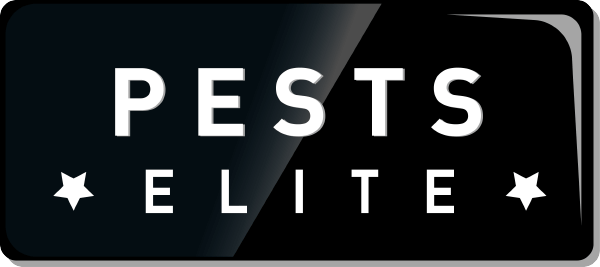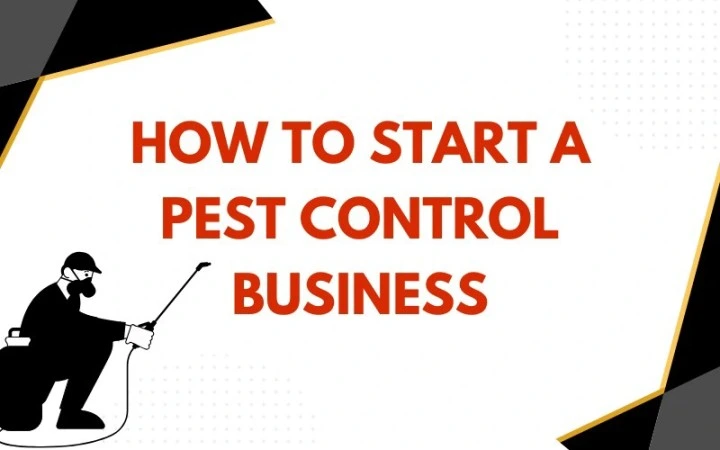Starting your own business can be both exciting and overwhelming, especially when it involves something as hands-on and regulated as pest control.
From bed bugs and termites to rodents and wasps, the demand for pest management continues to grow across the U.S. Homeowners and businesses alike are constantly in search of reliable services to keep their environments safe and sanitary.
If you’re thinking about launching a pest control company, you’re tapping into an industry with long-term demand but it requires careful planning, certification, and smart marketing.
In this detailed guide, you’ll learn exactly how to start a pest control business from the ground up. Whether you’re transitioning from a technician role or entering the industry as an entrepreneur, this step-by-step roadmap will help you build a business that’s legally compliant, professionally branded, and set up for sustainable growth.
1. Understanding the Market and Identifying Your Niche
Before diving into equipment or paperwork, it’s essential to understand your local market. Different regions face different pest problems while some cities are prone to termite infestations, others may struggle more with rodents, cockroaches, or seasonal insects.
Conduct research on what pest control companies already exist in your area and look closely at the services they offer, their pricing, and customer reviews. You may discover gaps in services, such as a lack of eco-friendly options or poor response times, which your business can fill.
Deciding on your service scope is equally important. Some companies offer broad services, handling everything from termites to wildlife removal. Others specialize in a particular niche, like bed bug extermination or commercial pest control.
A focused niche can help you become an expert in a specific area and make your marketing more targeted. However, a wider service range can attract more clients, especially during seasonal pest outbreaks.
👉 Pest trends: Termites, rodents, and ants are among the top concerns for U.S. homeowners, according to the National Pest Management Association.
2. Registering Your Business and Fulfilling Legal Requirements
Once you’ve identified your business direction, it’s time to make it official. You’ll need to choose a business name, register it with your state, and select a legal structure, most small business owners start as an LLC for liability protection and tax advantages.
After registering, apply for an Employer Identification Number (EIN) from the IRS, which you’ll need for taxes, hiring employees, and opening a business bank account.
Licensing is perhaps the most critical part of starting a pest control business. Every state has its own licensing requirements, usually handled through the Department of Agriculture or a pest regulatory board.
Most require you to pass one or more exams covering chemical safety, application methods, and pest biology. In some states, you’ll also need a certain number of hours working under a licensed professional before you can qualify for your own license.
In addition to licensing, many states require you to obtain a surety bond, a financial guarantee that you’ll comply with laws and handle client issues responsibly. You may also need to register your business with local city or county offices, depending on where you operate.
👉 Regulation note: Most U.S. states require pest control operators to be licensed through a state’s Department of Agriculture or similar agency. Learn more at the Environmental Protection Agency (EPA).
3. Investing in Insurance to Protect Your Operations
Insurance is a non-negotiable aspect of the pest control business. Working with chemicals and entering client homes or commercial properties opens up a number of risks. Accidental property damage, employee injuries, or even environmental harm can all lead to costly claims.
At a minimum, you’ll need general liability insurance to cover accidental damage or injuries. If you plan to hire employees, workers’ compensation insurance is typically mandatory. You’ll also want commercial auto insurance for any vehicles used for business purposes and professional liability coverage in case of claims related to your services.
Getting insured not only protects your business financially but also signals to clients that you’re professional and credible—something especially important in service industries where trust is key.
4. Purchasing Essential Tools and Equipment
Now that you’re set up legally, it’s time to purchase the tools you’ll need to get the job done. Pest control involves a wide range of equipment, depending on your services. At the core, you’ll need chemical applicators like backpack sprayers, foggers, and bait stations.
You’ll also need ladders, flashlights, protective gear (gloves, masks, goggles), and in some cases, traps and thermal scanners.
If you’re starting small, it’s best to stick with the essentials and scale your equipment list as your client base grows. Don’t forget about your work vehicle—it should have enough storage space, be reliable, and ideally, be branded with your business logo for extra visibility.
You’ll also want to invest in proper storage for chemicals to stay compliant with local laws. Improper storage can not only lead to fines but can pose safety hazards for you and your team.
5. Developing a Pricing Structure That Works
One of the trickiest parts of launching your pest control business is setting prices. Your rates should reflect the complexity of the service, the cost of materials, travel time, and your target market. Look at competitors in your area to gauge the going rates, but don’t undercut just to get clients—it can devalue your work and make it hard to scale later.
Consider offering multiple packages, such as one-time treatments, quarterly visits, or annual maintenance plans. This not only gives customers options but helps generate recurring revenue for your business. Clear, transparent pricing also builds trust and makes it easier to close sales.
6. Building a Professional Website That Converts
Your website is often the first impression potential clients get. A clean, mobile-friendly site with all the right information can turn visitors into paying customers. At a minimum, your site should include your services, contact information, pricing (or a quote form), and trust signals like customer reviews or certifications.
For better results, include a booking feature that allows clients to schedule inspections online. You can also integrate a chatbot or live chat option to answer common questions instantly. Blogging is another powerful tool—by publishing helpful articles on pest problems and prevention, you can attract local visitors via Google and build authority.
If web development isn’t your strength, consider hiring a digital marketing agency familiar with the pest control niche. A professionally designed website tailored to your business can pay for itself quickly through lead generation.
👉 Digital impact: 76% of people look at a company’s online presence before contacting them, and over 50% use mobile devices to research local services source.
7. Getting Found Locally with Google and Directory Listings
To generate leads quickly, you’ll want to establish a strong presence in local search results. Start by claiming and optimizing your Google Business Profile. This free tool helps your business appear in the “local pack” on Google Maps and search results, especially for terms like “pest control near me.”
Be sure to upload real photos, select accurate business categories, and encourage happy clients to leave reviews. High-quality reviews significantly influence whether people choose your service over a competitor.
In addition to Google, create profiles on platforms like Yelp, Bing Places, HomeAdvisor, and Angi. Make sure your business name, address, and phone number (NAP) are consistent across every listing to improve your SEO credibility.
8. Using Paid Ads and Local SEO for Faster Growth
If you want to hit the ground running, consider investing in Google Ads. These paid placements appear at the top of search results and allow you to target people actively looking for pest control services in your area. Even a modest budget can generate quality leads if your ad copy and landing pages are well-optimized.
Simultaneously, work on your local SEO. This includes adding location-specific service pages to your website (e.g., “Termite Control in Austin, TX”), getting backlinks from local websites, and embedding Google Maps on your contact page.
These efforts compound over time and help you dominate local searches without relying entirely on paid traffic.
9. Building Your Presence on Social Media
Levereage social media for brand awareness, generate leads, build trust, and show off your work. Platforms like Facebook, Instagram, and even TikTok are great for sharing before-and-after photos, customer testimonials, pest education tips, and company culture.
Join local Facebook groups and participate in neighborhood discussions. Offer value by answering pest-related questions without being overly promotional. Over time, this builds trust and turns your business into a local go-to resource.
You can also run geo-targeted social media ads to reach homeowners in specific zip codes, especially during pest-heavy seasons like spring and summer.
10. Utilizing CRM Tools to Stay Organized and Professional
Customer experience can make or break your business. As you start booking jobs, you’ll need a way to manage appointments, send invoices, and keep in touch with clients.
A customer relationship management (CRM) tool can help automate follow-ups, track leads, and schedule repeat services. Tools like Jobber, Housecall Pro, and ServiceM8 are built specifically for home service businesses and include mobile apps for field technicians.
These systems not only save time but make your business look more professional—something clients appreciate when they’re choosing between competitors.
👉 Efficiency boost: Businesses using CRM systems see a 29% increase in sales and 34% improvement in productivity source.
11. Planning for Growth: Hiring and Scaling
Once your business gains traction, you may reach a point where you can’t handle everything alone. Hiring your first technician is a big step, and it should be done thoughtfully. Look for candidates with prior pest control experience or who are open to training and certification.
Make sure to document your processes—from inspection routines to customer interactions—so you can maintain consistency as your team grows. Providing ongoing training keeps your team up-to-date on safety standards and evolving pest control techniques.
Final Thoughts
Learning how to start a pest control business is just the beginning. Succeeding in this industry requires continuous learning, strong customer service, and a smart approach to marketing and operations. By following the steps outlined above, you’ll be well on your way to building a reputable, profitable, and long-lasting business in your community.
Remember, people don’t just want pests gone—they want to trust the person doing the job. Show up prepared, communicate clearly, and always go the extra mile. That’s what turns a one-time client into a loyal customer—and what sets a great pest control business apart from the rest.
Frequently Asked Questions (FAQs)
-
How much does it cost to start a pest control business?
Startup costs typically range from $10,000 to $50,000 depending on size, licensing, and equipment. source
-
Is pest control a profitable business?
Yes. The U.S. pest control industry earned $26.2B in 2023 and continues to grow. source
-
Do I need a license to offer pest control services?
Yes, licensing is required in all 50 states.
-
What services can I offer?
Termite control, bed bug treatment, rodent removal, wildlife relocation, and general pest management.
-
How can I get clients?
Use Google Business, local SEO, ads, referrals, and social media marketing.


